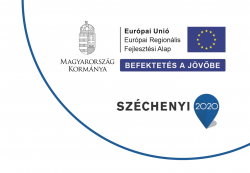Neurology - Practical Exam - Minimal Requirements
https://youtu.be/GuLuOD1VZtQ
2. Lasegue's sign
3. Examination of the pupil reflex
4. Examination of commanded and guided eye movements
5. Examination of facial nerve (separation of central and peripheral facial palsy)
6. Examination of muscle tone (detection of pronounced hypotonia/flaccidity, rigidity and spasticity)
7. Latent paresis tests (Mingazzini-test, Barre-test)
8. Detailed examination of proximal muscle strength (Shoulder belt, Hip belt, Shoulder flexors and extensors, Thigh flexors and extensors)
9. Detailed examination of distal muscle strength (median nerve, radial nerve, ulnar nerve; peroneal nerve, tibial nerve)
10. Degrees of muscle strength (knowledge of BRMC: 0-5/5 scale)
11. Triceps and biceps reflex induction
12. Patella and Achilles reflex induction (recognition of clonisation)
13. Hoffmann and Trömner signs
14. Babinski's sign
15. Oculocephalic reflex
16. Corneal reflex
17. Heel-to-knee test, finger-to-nose test (finger-to-finger test)
18. Examination and evaluation of Romberg's position
19. Gait examination (ataxic gait, paretico-spastic gait, stepping gait, Parkinson-type gait)
20. Examination of vibrational sensibility
21. Sensory tests (protopathic and epicritic sensibilities)
22. Literal knowledge of normal neurological state
5. Examination of facial nerve (separation of central and peripheral facial palsy)
6. Examination of muscle tone (detection of pronounced hypotonia/flaccidity, rigidity and spasticity)
7. Latent paresis tests (Mingazzini-test, Barre-test)
8. Detailed examination of proximal muscle strength (Shoulder belt, Hip belt, Shoulder flexors and extensors, Thigh flexors and extensors)
9. Detailed examination of distal muscle strength (median nerve, radial nerve, ulnar nerve; peroneal nerve, tibial nerve)
10. Degrees of muscle strength (knowledge of BRMC: 0-5/5 scale)
11. Triceps and biceps reflex induction
12. Patella and Achilles reflex induction (recognition of clonisation)
13. Hoffmann and Trömner signs
14. Babinski's sign
15. Oculocephalic reflex
16. Corneal reflex
17. Heel-to-knee test, finger-to-nose test (finger-to-finger test)
18. Examination and evaluation of Romberg's position
19. Gait examination (ataxic gait, paretico-spastic gait, stepping gait, Parkinson-type gait)
20. Examination of vibrational sensibility
21. Sensory tests (protopathic and epicritic sensibilities)
22. Literal knowledge of normal neurological state




